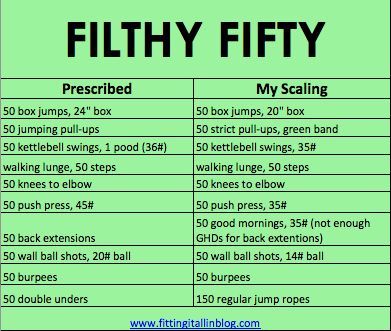
CrossFit is a high-intensity fitness program that combines various exercises from different disciplines,
including weightlifting, cardiovascular exercises, and bodyweight movements. It is known for its intensity and
effectiveness in improving overall fitness. However, CrossFit workouts can sometimes be daunting for newcomers
or individuals with different fitness levels. That’s where scaling plays a crucial role. Scaling helps modify
workouts to suit each individual’s fitness level, allowing everyone to participate and make progress safely
and effectively.
The Importance of Scaling in CrossFit
Scaling workouts in CrossFit is essential for several reasons. Firstly, it ensures that all participants can
partake in the workout, regardless of their current fitness level or experience. It promotes inclusivity and
prevents anyone from feeling intimidated or overwhelmed by the prescribed workout. Moreover, scaling allows
individuals to maintain proper form and technique, reducing the risk of injury. It also helps individuals
gradually build strength, endurance, and skill, ensuring steady progress on their fitness journey.
Understanding Scaling Options
CrossFit workouts can be scaled in various ways, depending on the specific movement, load, or workout duration.
Here are some common scaling options used in CrossFit:
Reducing Repetitions
One of the simplest scaling options is to reduce the number of repetitions. For instance, if the workout
prescribes 20 pull-ups, a scaled version may include 10 pull-ups or even assisted pull-ups to cater to
beginners or individuals who are building their upper body strength.
Decreasing Weights
Another scaling option involves reducing the weight used in exercises like weightlifting movements. For
example, if a workout requires 100lbs overhead squats, scaling could involve using 50lbs or even just a
PVC pipe to practice proper form and gradually increase strength.
Modifying Movements
Sometimes, certain movements in CrossFit workouts can be too advanced or require a higher level of
flexibility or skills. In such cases, scaling options may include modifying the movement while still
maintaining the intended stimulus of the workout. For instance, handstand push-ups can be scaled to
pike push-ups or even dumbbell overhead presses for individuals who are working towards mastering the
full movement.
Adjusting Time or Intensity
Scaling can also involve adjusting the duration or intensity of the workout. This option is useful for
individuals who are not yet comfortable with performing a particular workout within the prescribed time
frame. It allows them to gradually increase the intensity or volume over time, preventing burnout or
undue stress on the body.
Effective Scaling Strategies
When it comes to scaling CrossFit workouts, it’s important to follow some effective strategies to ensure
optimal results. Here are a few tips to keep in mind:
Communicate with Coaches
Effective communication with coaches is crucial in finding appropriate scaling options. They have the
knowledge and experience to guide you and recommend the best modifications based on your current fitness
level and goals. Don’t hesitate to ask for help and clarify any doubts you may have.
Focus on Quality Movement
Prioritize maintaining proper form and technique throughout the workout. Scaling should not compromise
your movement quality or safety. Practice the modified movements with precision, gradually increasing
the difficulty as you become more proficient.
Listen to Your Body
Pay attention to your body and its limitations. Scaling should not mean pushing yourself beyond your
capabilities in an unsafe manner. Be mindful of any discomfort, pain, or excessive fatigue, and make
adjustments accordingly. Remember, progress takes time and consistency.
Gradually Increase Intensity
Scaling allows you to start at a manageable intensity and gradually progress. As you gain confidence and
adapt to the workouts, gradually increase the difficulty, whether it’s adding repetitions, weight, or
reducing rest time. Consistency and gradual progression are key to long-term success.
Embrace the Community
CrossFit is known for its supportive and inclusive community. Embrace the community and surround yourself
with like-minded individuals who motivate and inspire you. They can offer guidance, share their scaling
experiences, and provide valuable advice to help you on your fitness journey.
Conclusion
Scaling CrossFit workouts is an integral part of the program, ensuring that individuals of all fitness levels
can participate, progress, and stay safe. By understanding the various scaling options available and following
effective strategies, everyone can benefit from the intensity and effectiveness of CrossFit workouts. Remember,
it’s not about comparing yourself to others but focusing on your own journey and making steady progress towards
your fitness goals.